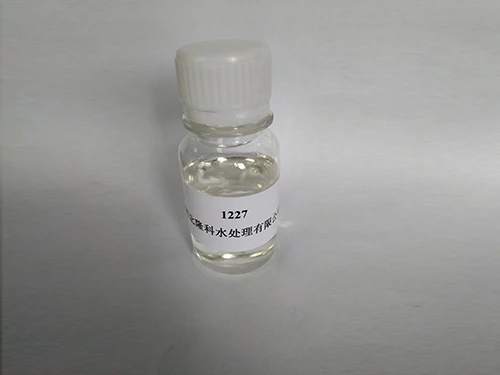flocculants used in water treatment
The Role of Flocculants in Water Treatment
Water is an invaluable resource, essential for human survival, economic development, and environmental sustainability. However, the increasing demand for clean water, coupled with pollution from industrial, agricultural, and urban sources, has necessitated the implementation of effective water treatment processes. One of the key components in these processes is flocculants, substances that facilitate the agglomeration of particles in water, thereby improving the clarity and quality of treated water.
What Are Flocculants?
Flocculants are chemical agents that promote the clumping or flocculation of fine particles suspended in water. They can be either natural or synthetic and are typically polymers that have a high molecular weight and a charged functional group. When added to water, flocculants interact with suspended particles, neutralizing their charges and causing them to adhere to one another. This aggregation results in the formation of larger, heavier particles, known as flocs, which can then be easily removed from the water through sedimentation or filtration.
Types of Flocculants
Flocculants can be broadly categorized into two types organic and inorganic.
1. Organic Flocculants These are usually synthetic polymers, such as polyacrylamides, which are widely used due to their effectiveness and versatility. They can be tailored to specific water treatment needs and can operate effectively over a range of pH levels and temperatures. Natural organic flocculants, derived from plant materials like guar gum and starch, are also used and are gaining popularity due to their biodegradable nature and lower environmental impact.
2. Inorganic Flocculants Common examples include aluminum sulfate (alum) and ferric chloride. These compounds have been used for decades in municipal water treatment processes. They work by destabilizing the colloidal particles and causing them to coagulate. While effective, inorganic flocculants can produce sludge that may require additional treatment and may also introduce heavy metals into the treated water if not managed properly.
flocculants used in water treatment

Applications of Flocculants in Water Treatment
Flocculants play a critical role in various water treatment applications, including municipal wastewater treatment, industrial water treatment, and drinking water purification. In municipal settings, flocculants help in the removal of sediments, organic materials, pathogens, and pollutants, thereby improving the overall quality of the water supplied to communities.
In industrial applications, flocculants are used to treat process water, enabling the recycling of water and reducing environmental impact. They are crucial in industries such as mining, paper production, and food processing, where large volumes of water are used and must be treated before disposal or reuse.
Furthermore, in drinking water treatment, flocculants ensure the removal of contaminants, providing potable water that meets safety standards. The effectiveness of flocculants can significantly reduce the need for additional chemicals and energy, leading to more sustainable and cost-effective water treatment processes.
Environmental Considerations
While flocculants are essential for effective water treatment, their use must be balanced with environmental considerations. Synthetic polymers, in particular, have raised concerns about their potential impact on ecosystems if not properly managed. Therefore, the trend in water treatment is moving towards more sustainable practices, including the development of biodegradable flocculants and the implementation of advanced treatment technologies that minimize chemical usage.
Conclusion
In conclusion, flocculants are integral to modern water treatment practices, contributing to the purification and recycling of water in various applications. Their ability to facilitate the aggregation of suspended particles plays a critical role in enhancing water quality. As the demand for clean water continues to rise, ongoing research and development will likely yield new flocculant solutions that are more efficient, cost-effective, and environmentally friendly. By embracing innovative water treatment technologies, we can ensure the sustainable management of this precious resource for future generations.
-
lk-319-special-scale-and-corrosion-inhibitor-for-steel-plants-advanced-solutions-for-industrial-water-systemsNewsAug.22,2025
-
flocculant-water-treatment-essential-chemical-solutions-for-purification-processesNewsAug.22,2025
-
isothiazolinones-versatile-microbial-control-agents-for-industrial-and-consumer-applicationsNewsAug.22,2025
-
scale-inhibitor-key-solutions-for-water-system-scale-preventionNewsAug.22,2025
-
organophosphonates-versatile-scale-inhibitors-for-industrial-water-systemsNewsAug.22,2025
-
scale-and-corrosion-inhibitor-essential-chemical-solutions-for-water-system-maintenanceNewsAug.22,2025





